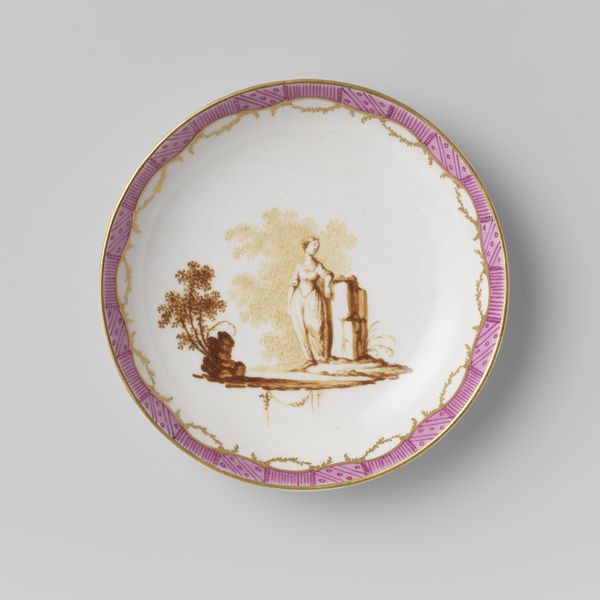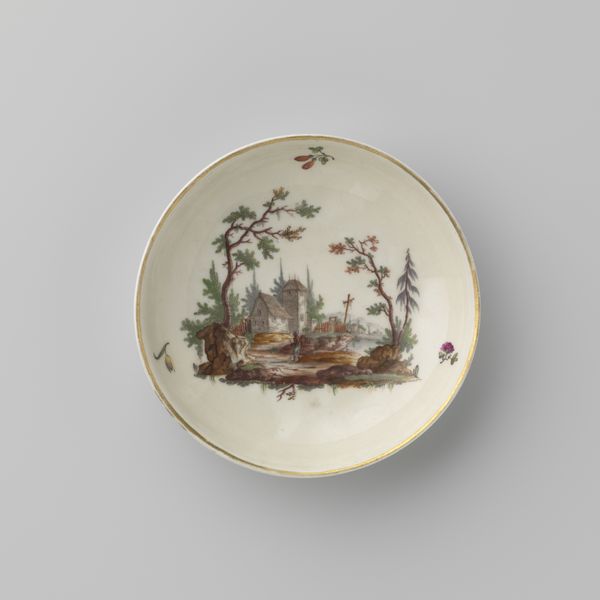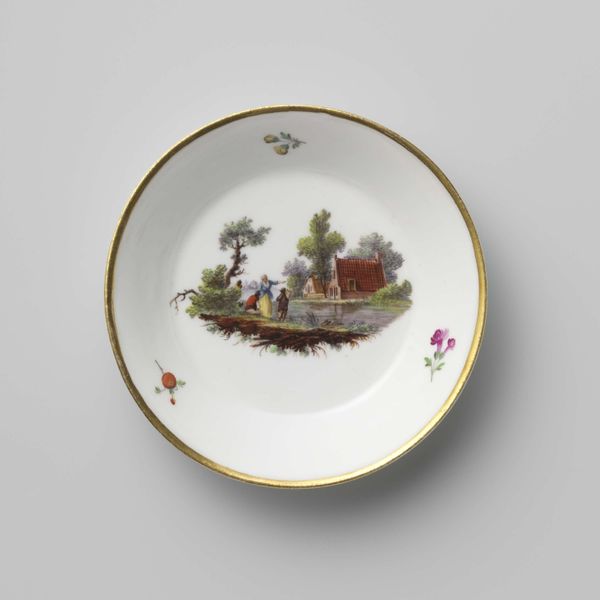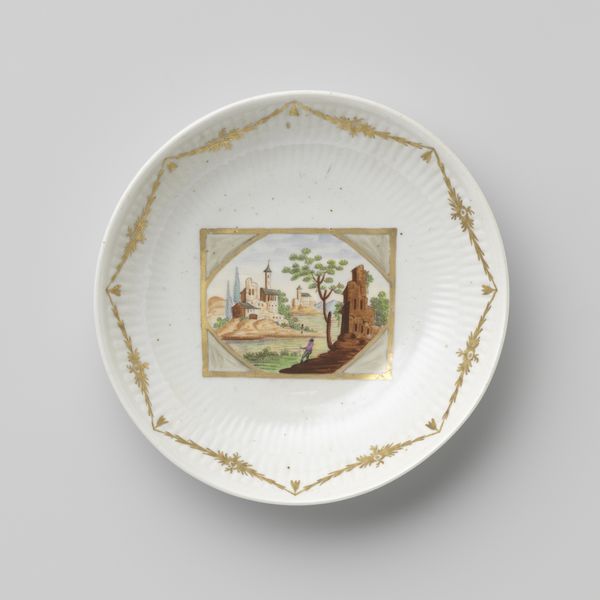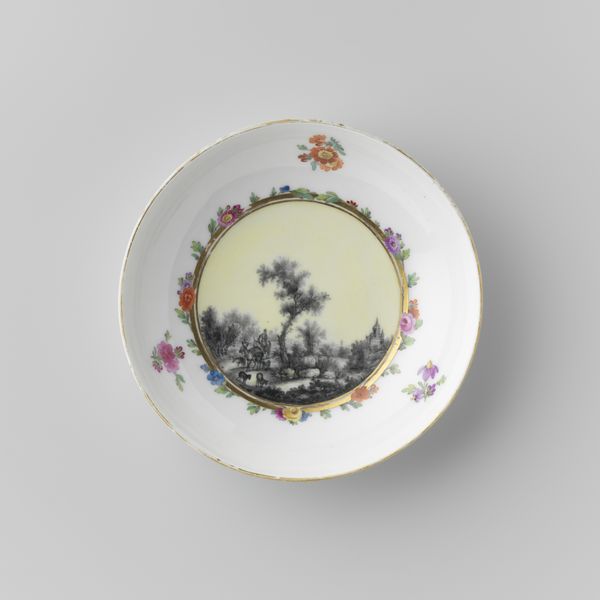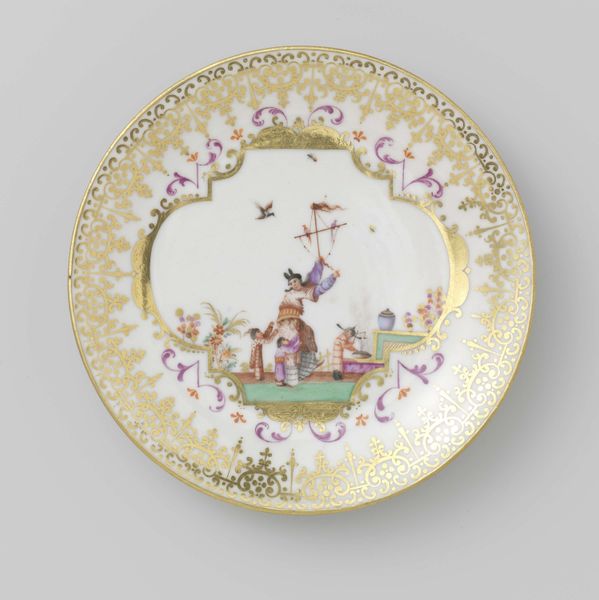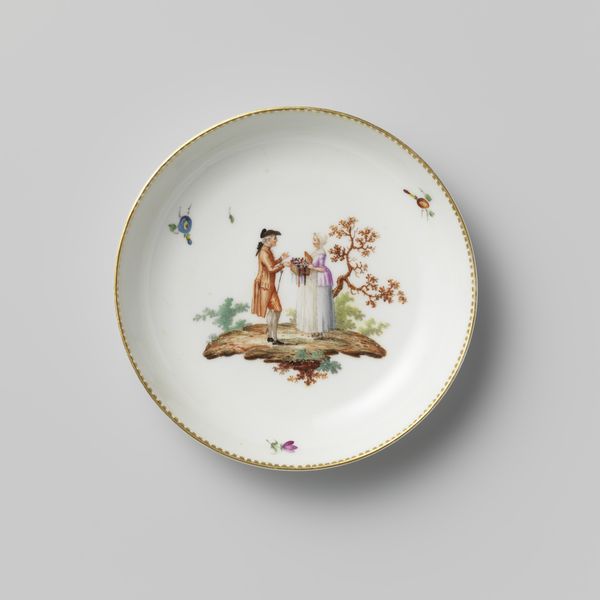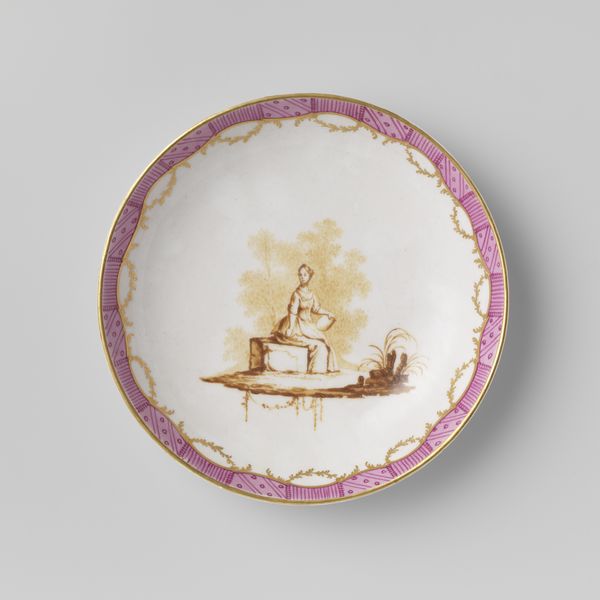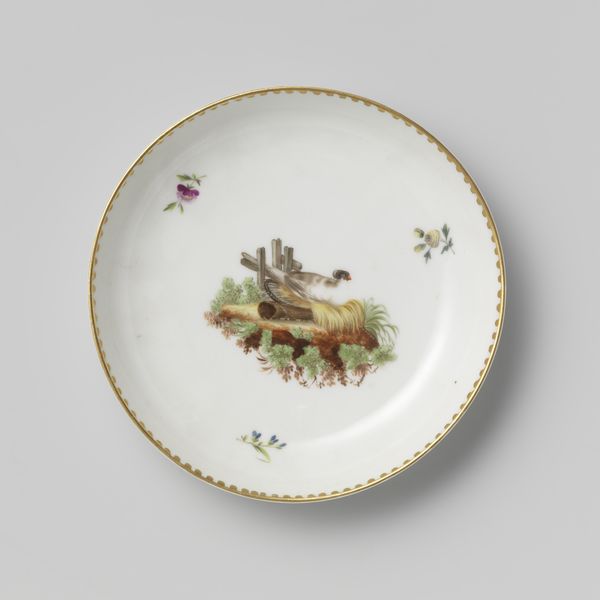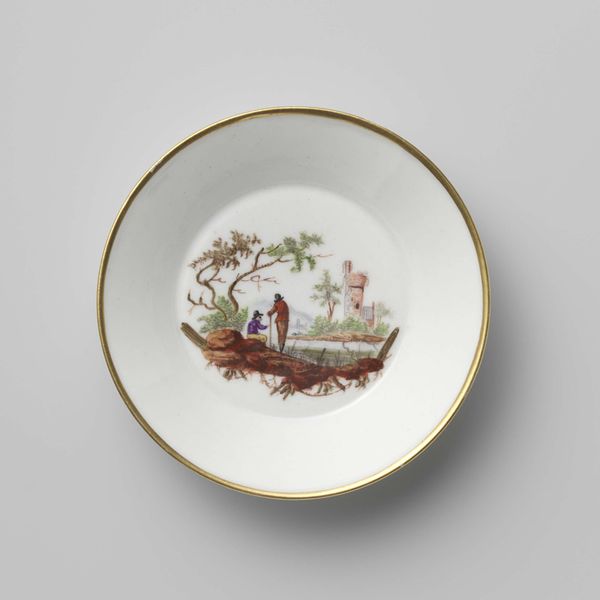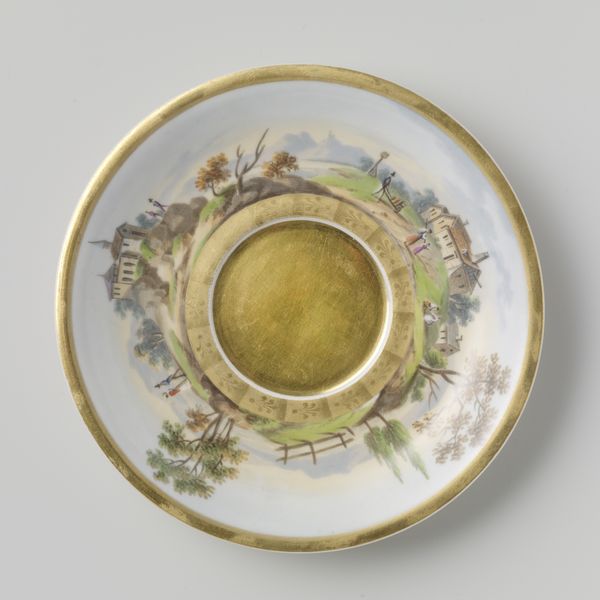
Dimensions: height 2.3 cm, diameter 11.5 cm, diameter 7 cm
Copyright: Rijks Museum: Open Domain
Curator: Here we have an intriguing piece: a saucer crafted around 1775-1799, attributed to Cozzi. What strikes you most about it? Editor: Initially, it feels serene. That verdant archway beckons you, offering a glimpse of a manicured garden, but also something more, almost like a portal. Yet the plate's function, domestic and almost mundane, conflicts intriguingly with the suggestion of escape or entry into an idealized, even aristocratic, world. Curator: Precisely. Consider the historical context. This piece comes from an era when landscape painting experienced heightened popularity, becoming ingrained within domestic spaces through decorative arts. The wealthy class sought to evoke and curate landscapes within the domestic setting. This little saucer becomes a symbol of the burgeoning commodification of leisure and nature that characterizes that class during this time. Editor: So it's not merely decorative; it represents an aspiration. I'm thinking about access to leisure during the Rococo period and who had the privilege to cultivate these elaborate landscapes. Was this imagery, even on a small plate, contributing to a certain power dynamic, or perhaps even, a kind of visual propaganda? Curator: In a way, yes. Objects like these played a role in shaping and reinforcing social hierarchies through the visual arts. While the decorative arts were gaining traction in everyday life, they would feature images, like this elaborate estate, of spaces to which few would gain access. Editor: This isn’t just about the love of landscapes; it's about encoding privilege onto an everyday item, reminding everyone where they stand—or perhaps, where they aspire to be standing. Now, I am thinking of environmental implications - what landscapes were altered to give rise to such verdant perfection? Curator: An astute observation. The very existence of idealized landscapes came at a cost – labor, resources, the reshaping of the land. Perhaps we need to see this saucer not just as a piece of art, but as a testament to a complex social and environmental landscape as well. Editor: Precisely. It gives a lot to reflect on when thinking about consumerism, decorative art, the commodification of landscape, and its environmental impact, both then and now. Curator: Absolutely. This small saucer serves as a portal into larger discussions around social history, material culture, and landscape appreciation.
Comments
No comments
Be the first to comment and join the conversation on the ultimate creative platform.

